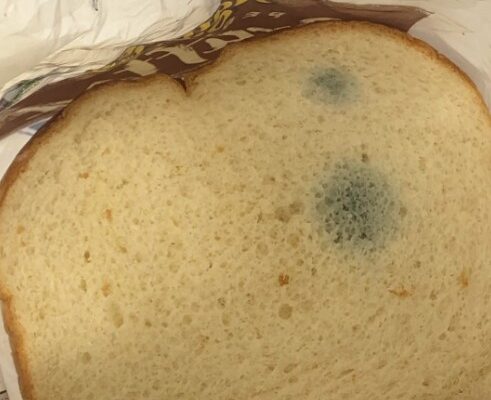Is Stale Bread Safe to Eat? Everything You Should Know Before You Decide
We’ve all faced it—the dreaded loaf sitting on the counter, hard as a rock, making you wonder: Is it still okay to eat? Bread can go from soft and fluffy to stale in no time. But here’s the real question—is stale the same as spoiled?
Let’s clear things up.
Good News: Stale Bread Is Usually Safe to Eat
Yes, stale bread is generally safe—as long as it’s mold-free. Staleness means the bread has simply lost moisture and become dry. It’s a natural process called retrogradation, where starch molecules firm up. The bread might feel tough or chewy, but it’s not harmful.
Sure, eating it plain might be less enjoyable, but don’t count it out just yet.
How to Bring Stale Bread Back to Life
Before you toss that loaf, try these easy tricks to revive it:
- Heat it up: Wrap the bread in foil and warm it in the oven at 350°F (175°C) for a few minutes.
- Toast it: Crispy, golden toast is a perfect way to enjoy stale bread.
- Cook with it: Many recipes actually call for stale bread because it holds up better!
Delicious Ways to Use Stale Bread
Stale bread is a kitchen treasure if you know how to use it. Here are some tasty ideas:
- Breadcrumbs: Dry it out completely, then blitz into crumbs for meatballs, casseroles, or breading.
- Croutons: Cube it, toss with olive oil and your favorite herbs, then toast until crispy—perfect for salads and soups.
- French Toast: Stale bread soaks up custard better than fresh bread, resulting in a firmer, more satisfying bite.
- Bread Pudding: Slightly dry bread absorbs sweet custards beautifully, making it ideal for this classic dessert.
- Panzanella Salad: This Italian favorite celebrates chewy stale bread combined with ripe tomatoes and fresh herbs.
- Stuffing: Nothing beats day-old bread to soak up all those delicious savory flavors.
So next time your bread gets stale, don’t despair—embrace it in your cooking and turn it into something delicious!

Moldy Bread? Don’t Even Think Twice—Toss It Immediately
Here’s the hard truth: If you spot mold—whether it’s green, blue, or black—throw that bread away. Cutting off the moldy spot won’t save the loaf. Bread is porous, so mold spreads invisibly deep inside.
Why Moldy Bread Is a No-Go
Eating moldy bread can cause allergic reactions or even food poisoning from harmful toxins called mycotoxins. It’s just not worth the risk—moldy bread belongs straight in the trash.
How Quickly Does Bread Mold?
It varies depending on:
- Moisture: Fresh, homemade bread molds faster than packaged.
- Temperature: Warm and humid environments speed up mold growth.
- Preservatives: Store-bought bread often lasts longer thanks to additives.
Typical timeline:
- Fresh homemade bread: 2–3 days
- Store-bought bread: Around 7 days or more
- Refrigerated bread: 7–10 days (but it stales quicker!)
How to Store Bread Like a Pro
You want to keep bread fresh without speeding up mold or staling.
Short-term (room temp):
Use a bread box or paper bag for 2–3 days. Avoid plastic bags unless it’s store-bought bread with preservatives—plastic traps moisture and invites mold.
Long-term (freezer):
Freeze sliced bread wrapped in foil and sealed in freezer bags to avoid freezer burn. Take out only what you need.
Skip the fridge (unless super humid):
Cold temps dry bread out fast, making it stale before it molds.
How to Store Bread Like a Pro
You want to keep bread fresh without speeding up mold or staling.
Short-term (room temp):
Use a bread box or paper bag for 2–3 days. Avoid plastic bags unless it’s store-bought bread with preservatives—plastic traps moisture and invites mold.
Long-term (freezer):
Freeze sliced bread wrapped in foil and sealed in freezer bags to avoid freezer burn. Take out only what you need.
Skip the fridge (unless super humid):
Cold temps dry bread out fast, making it stale before it molds.
Best Storage Tips by Bread Type
- Artisan bread: Paper bag or bread box for a couple of days, freeze for longer storage.
- Sandwich bread: Keep in its plastic bag for about a week; freeze after opening.
- Homemade bread: No preservatives mean eat quickly or freeze right away.
The Bottom Line
- Stale bread = Safe and useful
- Moldy bread = Unsafe, toss it out
Next time your loaf feels like a brick, ask yourself: Is it just stale or is it moldy? Stale bread can become delicious meals; moldy bread should go straight to the trash.
With smart storage and a little kitchen creativity, you’ll waste less and enjoy more. Don’t judge a loaf by its crunch—make it work for you!
